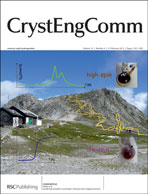Fabrication of the best conductor from single-crystal copper and the contribution of grain boundaries to the Debye temperature
Abstract
The scientific community has attempted to fabricate superconductors that work at room temperature; however, this goal has not yet been achieved. Considering miniaturization of devices and the requirement of low-power consumption in electronics, it is important to enhance room-temperature conductivity. We prepared the best conductor using


 Please wait while we load your content...
Please wait while we load your content...